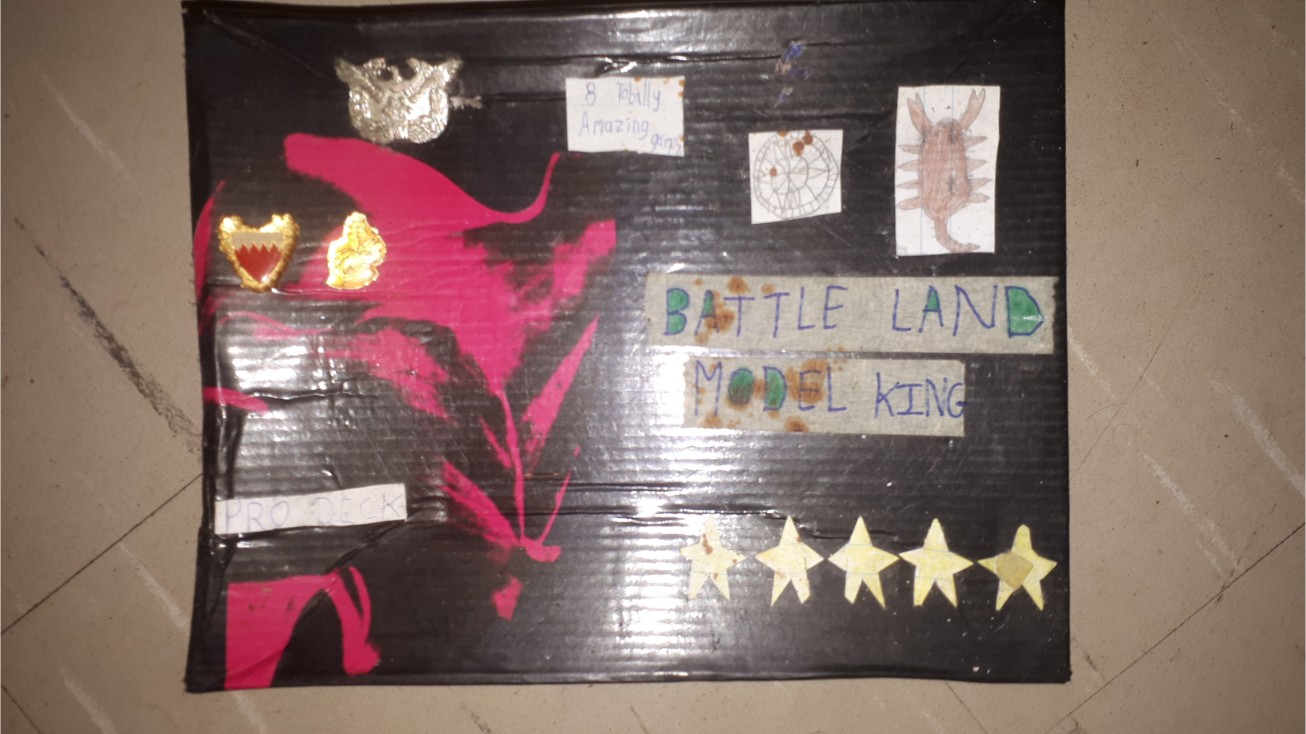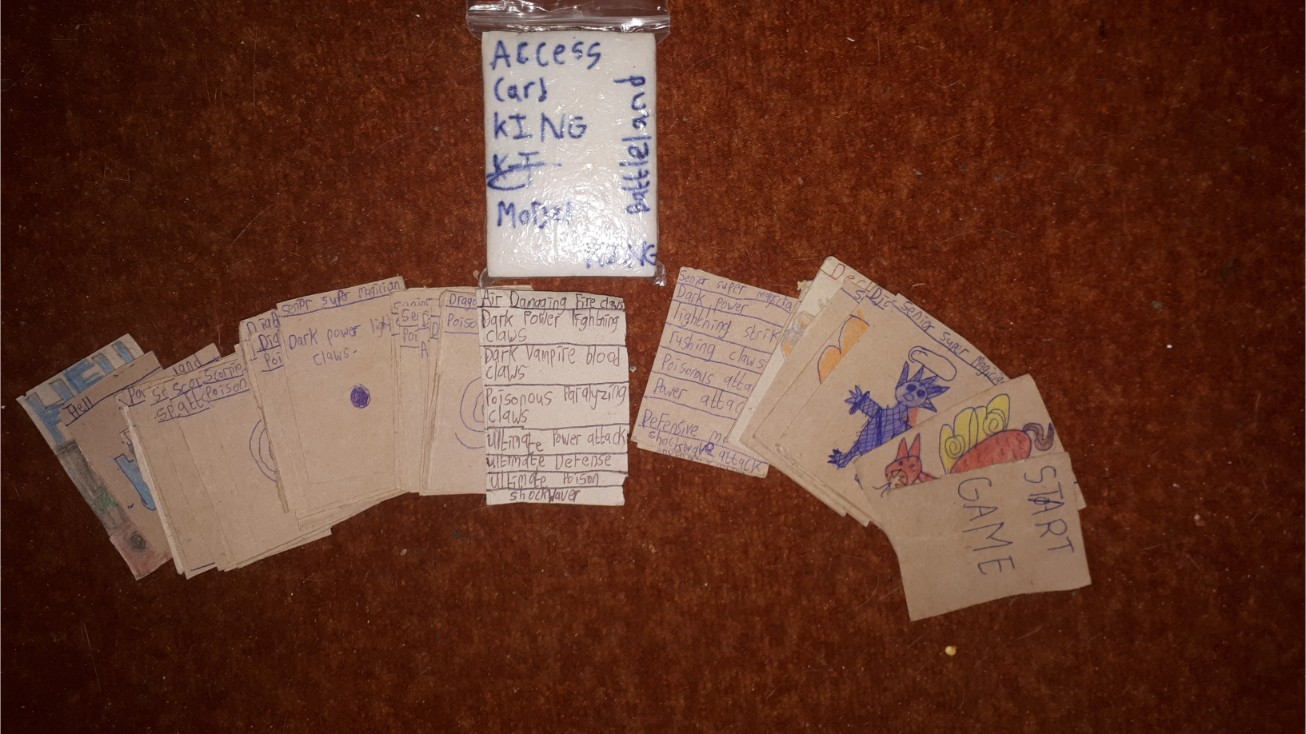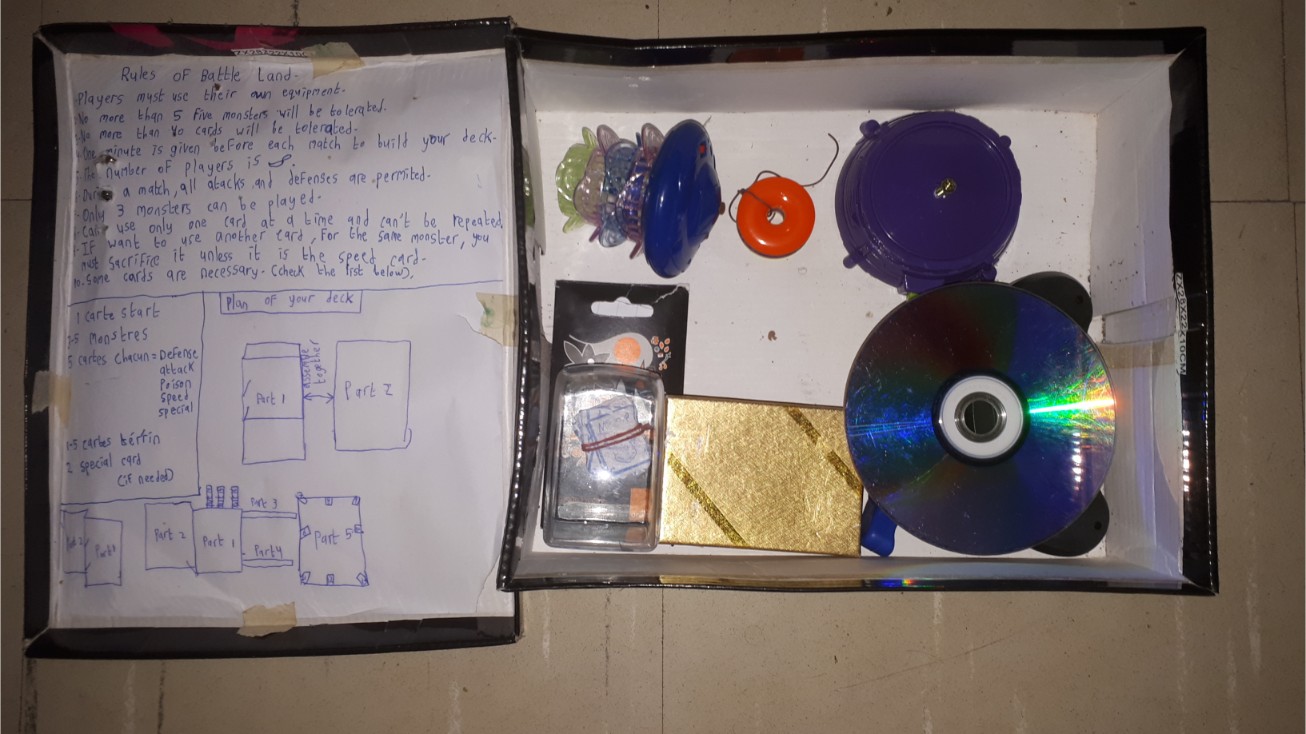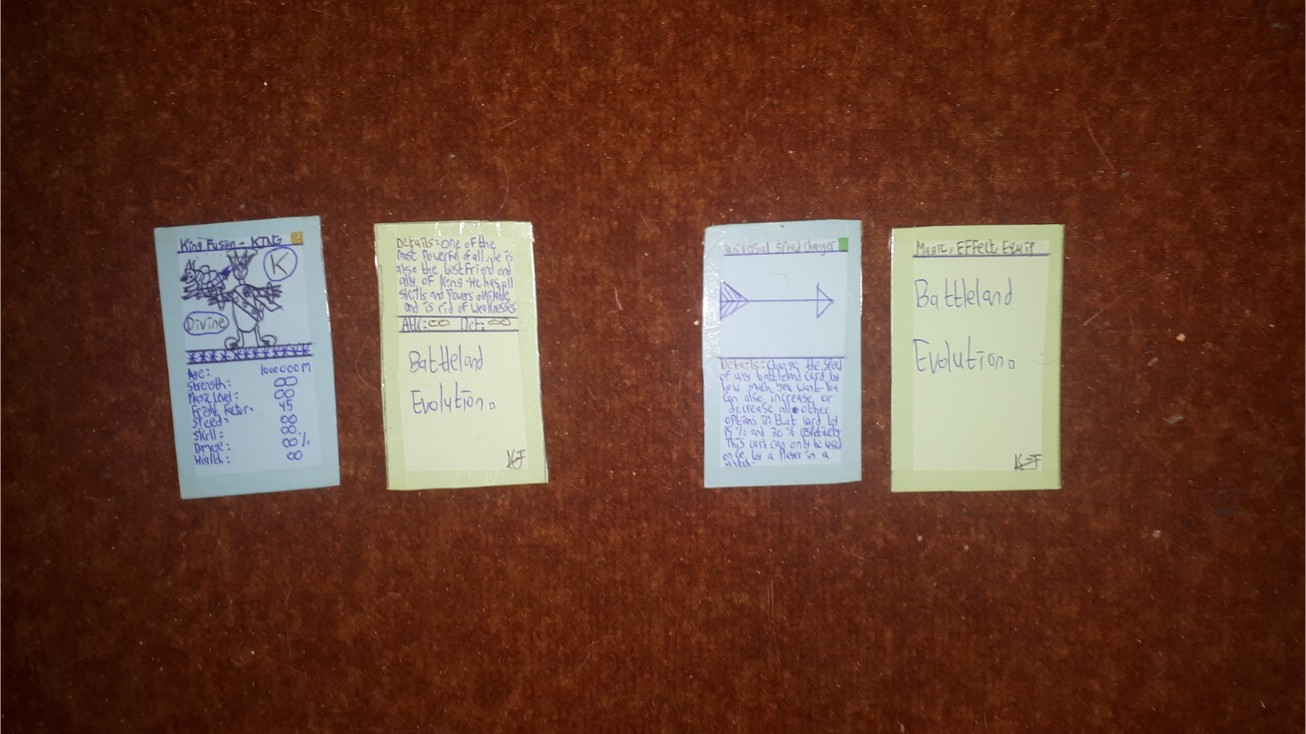Battleland Evolution
I absolutely loved watching cartoons (still do) when I was a child (mainly french ones). It was rare to see a bad cartoon on TV at that time. Several cartoons had an influence on me. The likes of Yu-Gi-Oh and Galactik Football were the most notable examples. I liked playing Nintendo DS games too.





The Original Battleland
One day, I got the idea of making my own card game and its own rules. I made cards from cardboard, with no particular dimensions or style. I also had some kits aimed towards assembling specific vehicles using little metal parts. Instead of a vehicle, I made something similar to the duelling disk of Yu-Gi-Oh for inserting my Battleland Cards. There were different types of cards for this first iteration of Battleland. If you watched the Dinofroz cartoons, you’ll know that when each character transformed in his unique dinosaur state, he had specific moves and powerups. That’s exactly what Battleland was at that time. There were cards which represented monsters (usually those found in the monsters’ book), cards which had a list of moves and abilities for each of the player’s monsters and finally, those which could enhance the abilities of monsters or give them new ones, cure them, fusion them or even modify the environment they were in. Additionally, there were a lot of other objects me and my cousins used apart from the disk. We each had a top (‘toupie’) which we would spin at the beginning of the game to determine who played first. Then there was a pawn we placed on our ‘duelling disk’ which was like our key to start the game. I also made a lot of other objects to use along the game but they don’t really matter much.
Original Rules
You’ll know from the above section that there were 3 types of cards. Basically, me and my cousins would imagine the game in our heads and loudly announce our intentions. We thought of our monsters falling into traps or attacking the ones of other players and things like that. So that’s it for the gameplay. Now let’s talk about the rules. The first rule was that players had to separate their cards into 2 stacks. One stack was for monster cards. There was a minimum of 3 monster cards and a maximum of 5 monster cards that was authorized for each player. The other stack consisted of the cards which modified the stats of monsters or their abilities or which had an effect on the environment, and which basically changed something about the game. For each monster card, 1-4 cards which affected that monster’s stats could be placed in that stack. A maximum of 1 card which modified the environment and a maximum of 2 other cards (which could activate the special abilities of particular monsters or do other things) could be placed in that stack too. Cards placed in those stacks were used during the game. The cards which had the list of moves/abilities for monsters remained outside the disk and could be used anytime as reference by the player because it wasn’t so easy remembering the names of moves and abilities. Cards modifying the stats of monsters (defense, attack, speed, poison) could be used one at a time (except for the speed card which could be used alongside) and it was allowed to pair them with cards which enabled the unique special abilities of monsters for instance. Each monster had its own unique cards though and for example, a card modifying the stats of a monster couldn’t be used to modify the stats of another monster. The same applies to the cards which enabled the unique special abilities of monsters. Finally, cards couldn’t be used again.
Evolution Introduction
I’m the type of person who could iterate a project several times until I’m satisfied of what it became. Years after the original Battleland, I wanted to make the cards look better. I completely modified the game and remade the rules. I added everything I wanted to the cards and made them look better. I carefully crafted each one and added a little plastic coating to their sides. I was really satisfied of all the cards I made in the end and they looked way better than the original Battleland cards. There was also a paper with some soul drawings on it that served as the game board. Each player needed to have their own soul board and Battleland Evolution cards.
Evolution Cards
This time, there were 2 types of cards; monster cards with monsters and a lot of stats
and fields, and special cards which acted upon monsters or the environment. All cards had a name which was
displayed on top and a drawing just below. Let’s talk about special cards first. Half of the front of these
cards had a description of what they did and how they should be used. At the back of these special cards, there
were attributes written to specify what type of special card they were and whether they could be equipped or not.
Monster cards were far more complicated. At the top right side, there was a colour to represent their
rarity. The order from less rare to most rare is as follows; red, black, green, blue, yellow. Beside the drawing
of the monster, there were some characters to represent its unique initials and a word to describe the type of
being that it was. Then there was a row with stars. A monster with more stars was more powerful but harder
to bring on the game board. Then there were a lot of fields below to specify the age, strength, magic power,
scariness, speed, skill level, damage and health of that monster. At the back of the card, there were details
concerning the monster such as its origins or status. Finally, there was the attack and defense points of that
monster. Each of my cards was also signed and had the certification of being a Battleland Evolution card but
that was really optional.
Evolution Rules
There were a lot of different game modes but we’ll talk about the 2 main ones. There
was the Yu-Gi-Oh-based game mode where only the levels (stars) and the attack/defense points (back) of monster
cards were considered. The special cards were taken as magic/trap/spell cards. The game was then played like
a normal Yu-Gi-Oh match.
Then there was the new Battleland Evolution type of game mode. Every field of monster cards was taken into
consideration except those used for the Yu-Gi-Oh-based game mode. Basically, a player could equip or use a
special card whenever he wanted and there were no specific rules. Monsters could battle with other monsters
based on similar fields. For example, a player could attack another player’s monster based on the magic level
of both monsters. The monster who had the lowest magic level of the 2 would then be destroyed and the score of
the winner would be incremented. Of course, when a player decides to attack the opponent’s monster based on a
field, he/she doesn’t know the value of that field beforehand. Battles continue and can be altered by special
cards until a player runs out of monster cards or if a timer that has been set is over. Each player can have one
monster at a time on the field and draws one random card per turn which can be either a monster or a special one.
Nothing happens if a player doesn’t have a monster on the field when his/her opponent has one. The opponent will
just draw a card or/and activate a special card during his/her turn. A player must spawn a monster if he/she has
a monster card in his/her hand. This game mode has been mostly inspired by a Nintendo DS game that I played.